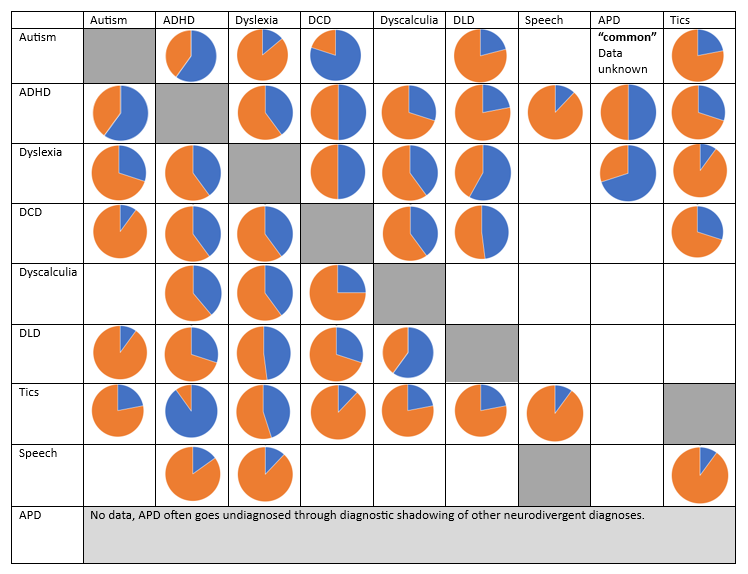Conditions are said to co-occur when they are found in the same person at the same time. This is different from co-morbidity, which implies that the conditions are unrelated.
Neurodiverse conditions co-occur at very high rates. Due to diagnostic shadowing and the rigidity of single diagnosis pathways, individuals may not be aware that they have more than one neurodivergence. This means that data of co-occurrence rates remain estimations.

The above image illustrates the estimated prevalence of two neurodivergences. The blue section of each pie graph represents the likelihood of that condition being present with the primary diagnosis (listed down the left side). Gaps represent a lack of statistical understanding in these areas.
Other Commonly co-occurring conditions
Mental Health
- Anxiety
- Depression
- Obessive Compulsive Disorder (OCD)
- Bipolar
- Post Traumatic Stress Disorder
- Eating disorders
Sensory
- Irlens Syndrome
- Prosopagnasia
- Synaesthesia
- Alexithymia
- Sensory processing disorder (SPD)
- Aphantasia
- Visual Difficulties
Bowel and Bladder
- Irritable Bowel Syndrome
- Nocturnal enuresis
- Allergies
Neurological and Physical
- Epilepsy
- Sleep Disorders
- Hypermobility Syndrome
- Ehlers Danlos Syndrome
- Fibromyalgia
- Chronic Fatigue Syndrome (CFS)